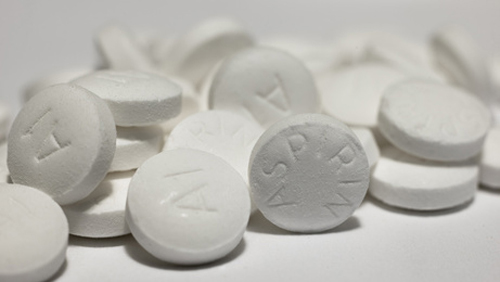Only certain healthy, older people could stave off cancer using low-dose aspirin (LDA), according to a secondary analysis of a large clinical trial that flags those who might benefit.
Primary results from the trial did not show that 100 mg per day enteric-coated aspirin prevented cancer over the course of five years among its nearly 20,000 participants.
But the extended analysis, published in JAMA Oncology, suggests there were benefits for older people and those who were non-smokers, had a family history of cancer, or a lower body mass index.
Others who benefited included participants with the age-related phenomenon of clonal hematopoiesis of indeterminate potential (CHIP) at a variant allele frequency (VAF) of at least 10%.
The researchers demonstrate a connection with CHIP and they suggest it may play a pivotal role in affecting the efficacy of aspirin through inflammatory pathways.
“Although further research is needed to elucidate these complex pathways, our findings highlight CHIP as a promising biomarker for personalizing medicine in cancer prevention,” they reported.
The team, led by Le Thi Phuong Thao, PhD, from Monash University in Melbourne, Australia, looked further into results from the Aspirin in Reducing Events in the Elderly (ASPREE) trial, a large randomized controlled trial (RCT) conducted in 19,114 relatively healthy older adults.
Primary findings showed no overall difference in cancer incidence between participants randomized to 100 mg/day LDA or placebo over a median follow-up of 4.6 years, which was consistent across various prespecified and post hoc subgroups.
However, Thao et al. note the limitations of one-by-one subgroup analyses, including their low statistical power and increased risk of false-positive or false-negative results, which restrict interpretation.
They aimed to overcome these limitations by developing and validating an effect score model to predict the personalized treatment effect of LDA on cancer incidence in a non-prespecified secondary analysis.
By considering multiple participant characteristics simultaneously, the approach estimates the individualized treatment effect (ITE), defined as the difference in potential outcomes under LDA and placebo for each participant.
In this way, it offers a promising approach to identify subgroups who may benefit differentially from LDA for cancer prevention and thereby have altered overall benefit-risk profiles to consider for treatment personalization.
Given the emerging evidence of CHIP as a risk factor for incident cancer, including in the ASPREE cohort, they incorporated CHIP as a potential treatment modifier, along with other participant characteristics. CHIP was measured in 18 genes using a targeted sequencing assay.
Among 9434 ASPREE-CHIP participants who provided biospecimen samples for CHIP testing and had these baseline measurements available, 84 were excluded due to missing information. The analysis therefore included 9350 participants, of whom 49.9% were randomly assigned to aspirin and 50.1% to placebo.
The median age of these participants was 73.7 years; 53.7% were women; 9.7% of participants had diabetes at baseline; and 5.7% had CHIP at a VAF of 10% or greater.
During the follow-up, 10.8% of the 9350 participants developed incident cancer, most commonly of the prostate followed by colon or rectal cancer, and 2.1% died.
Across the cohort, the predicted ITE of LDA in cancer risk reduction ranged from—23.0% to 21.5%. LDA was predicted to be beneficial for 59.1% of the study population, although the hazard ratio that crossed one.
However, the treatment effect varied significantly, with a hazard ratio of 0.85 for cancer in the treatment-favorable subgroup but 1.14 in the treatment-unfavorable subgroup.
Participants in the treatment unfavorable subgroup had a higher median body mass index and a higher prevalence of current smoking, diabetes, polypharmacy, and personal history of cancer. Those in the treatment-favorable subgroup were, on average, older, and they had higher median hemoglobin levels and higher prevalence of family history of cancer and CHIP.
The mechanism for the CHIP association is unknown, the researchers acknowledge, but they speculate that it is due to the association between CHIP and elevated proinflammatory cytokines such as interleukin (IL)-6, IL-8, and tumor necrosis factor-α.
They add that, given aspirin’s well-established anti-inflammatory properties which involve inhibiting cyclooxygenases and subsequently reducing prostaglandin-induced inflammation, their results suggest a plausible biological mechanism for the observed interaction between CHIP and aspirin.
“This secondary analysis of an RCT provided evidence for the heterogeneity of the effect of LDA on cancer incidence in older adults,” the authors reported.
“By incorporating CHIP and other clinical factors into a prediction model, we identified a subgroup of people who may derive greater benefit from aspirin therapy,” they added.
“These findings highlight the importance of considering heterogenous treatment effects in the design and analysis of RCTs, promote the application of personalized inference in clinical decision-making, and offer valuable insights for future research.”

